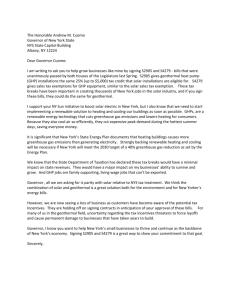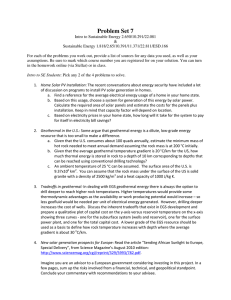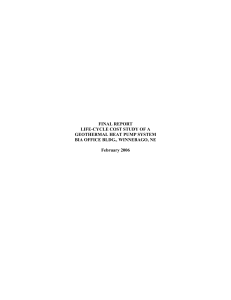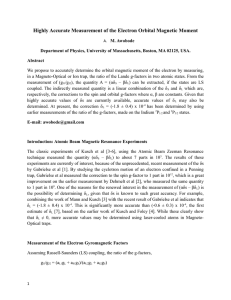FACT SHEET HANDOUT
advertisement
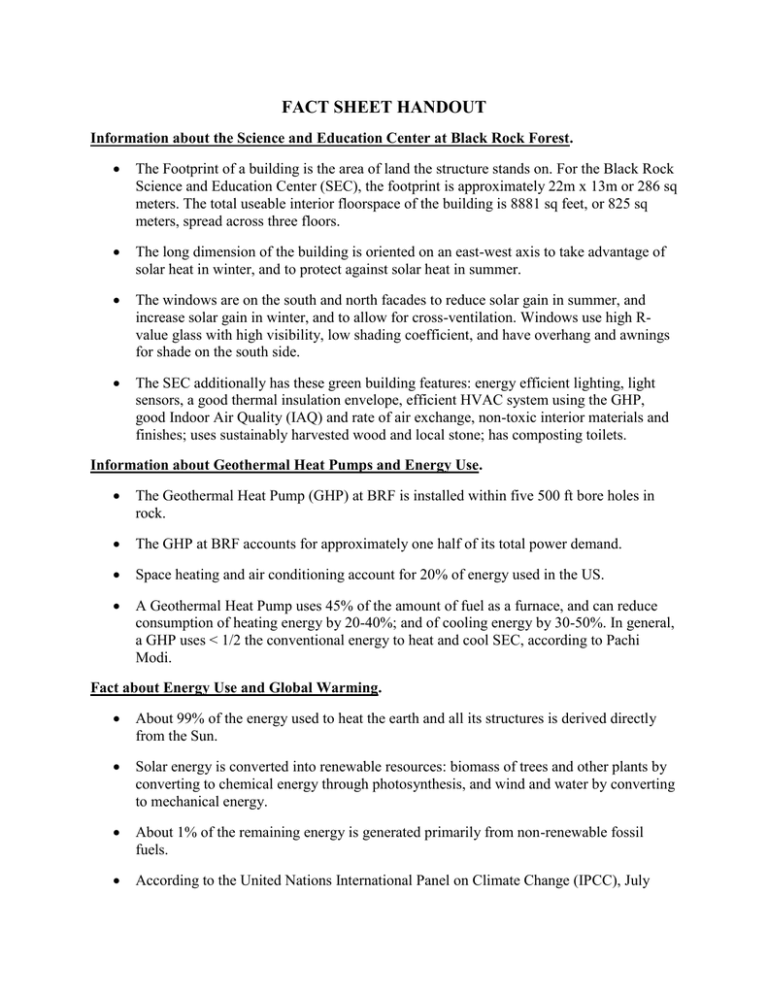
FACT SHEET HANDOUT Information about the Science and Education Center at Black Rock Forest. The Footprint of a building is the area of land the structure stands on. For the Black Rock Science and Education Center (SEC), the footprint is approximately 22m x 13m or 286 sq meters. The total useable interior floorspace of the building is 8881 sq feet, or 825 sq meters, spread across three floors. The long dimension of the building is oriented on an east-west axis to take advantage of solar heat in winter, and to protect against solar heat in summer. The windows are on the south and north facades to reduce solar gain in summer, and increase solar gain in winter, and to allow for cross-ventilation. Windows use high Rvalue glass with high visibility, low shading coefficient, and have overhang and awnings for shade on the south side. The SEC additionally has these green building features: energy efficient lighting, light sensors, a good thermal insulation envelope, efficient HVAC system using the GHP, good Indoor Air Quality (IAQ) and rate of air exchange, non-toxic interior materials and finishes; uses sustainably harvested wood and local stone; has composting toilets. Information about Geothermal Heat Pumps and Energy Use. The Geothermal Heat Pump (GHP) at BRF is installed within five 500 ft bore holes in rock. The GHP at BRF accounts for approximately one half of its total power demand. Space heating and air conditioning account for 20% of energy used in the US. A Geothermal Heat Pump uses 45% of the amount of fuel as a furnace, and can reduce consumption of heating energy by 20-40%; and of cooling energy by 30-50%. In general, a GHP uses < 1/2 the conventional energy to heat and cool SEC, according to Pachi Modi. Fact about Energy Use and Global Warming. About 99% of the energy used to heat the earth and all its structures is derived directly from the Sun. Solar energy is converted into renewable resources: biomass of trees and other plants by converting to chemical energy through photosynthesis, and wind and water by converting to mechanical energy. About 1% of the remaining energy is generated primarily from non-renewable fossil fuels. According to the United Nations International Panel on Climate Change (IPCC), July 2000, average global temperature could warm by 5.8° C by 2100, twice the previously anticipated rate. The United States with about 4.6% of the world’s population uses 25% of the world’s commercial energy, 85% of that from non-renewable fossil fuels. In the US, roughly 43% of commercial energy used is wasted unnecessarily due energy inefficiency of poorly designed buildings. A modern power plant produces electrical energy at the rate of about one billion watts or 1000 megawatts.
